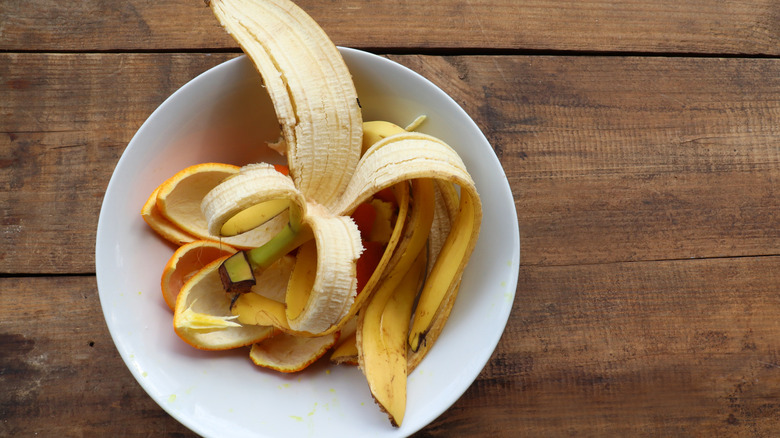This Japanese Robot Can Now Peel A Banana
AI-powered robots are gradually being implemented into commercial kitchens in order to assist the foodservice workforce, at least with small but easily repeatable tasks like frying chips. A recent video from researchers with the Intelligent Systems and Informatics Laboratory at the University of Tokyo showed a robot that may be capable of something more complex, however. The machine features two massive, wire-laden arms, which are shown attempting to solve the surprisingly difficult process of peeling a single, medium-sized banana.
While the skill may come easy to us humans, peeling a banana is a surgical process with several steps. Most machines aren't equipped to handle anything this tricky, and in general, machines have been far better at assisting with large-scale tasks that only involve a single and highly repeatable step. This is why it makes sense that the new Japanese robot, which represents an upper echelon of advanced AI technology, currently only has a 57% success rate, according to NBC. Yes, this means, in its current iteration, the robot fails at peeling bananas the other 43% of the time on average.
This robot is part of a greater trend within the global foodservice industry, where AI is growing steadily more useful in freeing up human workers who would otherwise be stuck performing basic, repetitive tasks. In October 2019, the New York Times reported that McDonald's spent hundreds of millions of dollars acquiring AI-powered and machine learning-based technology.
How does the banana-peeling robot work?
The robot's two large mechanical arms are designed to mimic the motions of real human arms and hands, which means the robot's "brain" needs to understand how human hands operate. Unfortunately, programming dexterity into a robot isn't as simple as writing a few lines of computer code. This is where AI deep learning – specifically, deep imitation learning tech – comes into play. If you're familiar with concepts like NVIDIA DLSS or Google DeepDream, you may already understand how artificial intelligence repurposes existing data to create something new.
Similarly, AI can learn to model real human behavior by "observing" humans in real life. If you show an AI hundreds of videos of different people peeling bananas in different contexts and with slightly different motions, you can paint a broad enough picture of what the process is supposed to look like. In theory, this can provide the AI deep imitation learning algorithm with enough direction to subsequently complete each of the several complex steps involved in holding the banana, squeezing the tip, and unwrapping the fruit peel-by-peel. At least, this is how researchers at the University of Tokyo effectively taught the robot how to peel bananas at a 57% success rate in more than 13 hours.
Researchers are hoping that robots like this can make life easier at Japanese food processing facilities or even fill in for food service worker shortages. However, it may take some time until these robots are shipped out en masse.
